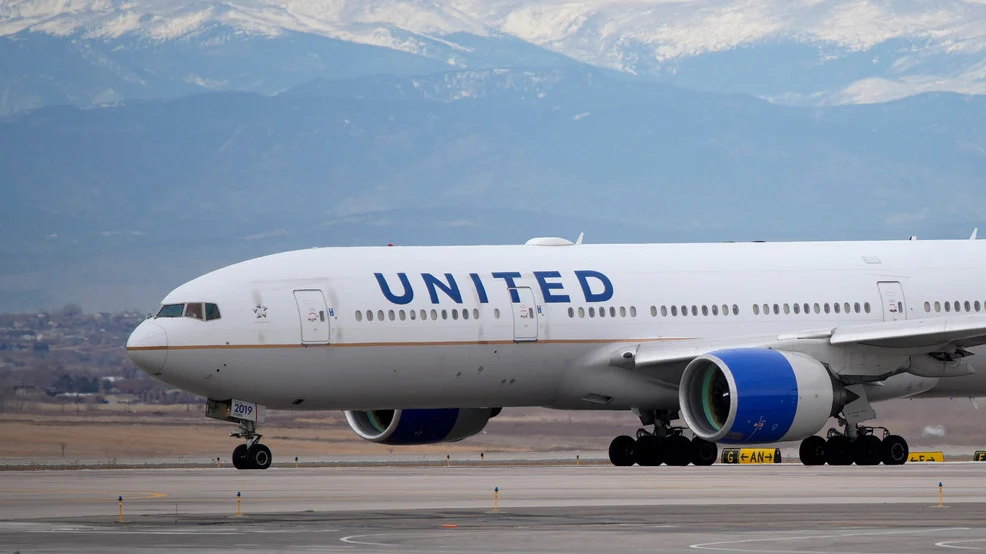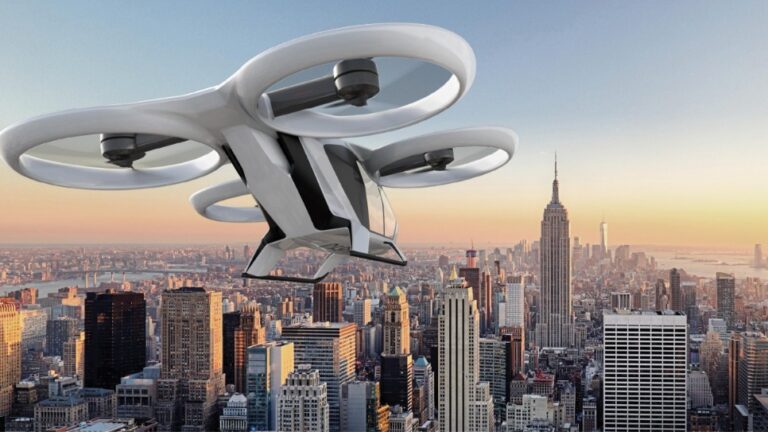
Introduction
Air travel is often seen as routine, yet every so often, an incident reminds us of the precision, training, and resilience required to keep aviation the safest mode of transportation. One such event occurred in 2025 when United Airlines Flight UA770 experienced not one but two emergency diversions in separate months. These incidents, though unrelated, shed light on the complexities of modern aviation safety, the role of crew communication, and the importance of passenger trust.
This article offers a deep dive into the events surrounding Flight UA770, blending factual reconstruction with technical analysis, industry context, and human perspective.
Setting the Stage: Flight UA770
Flight UA770 is a United Airlines service frequently scheduled on different routes, including Los Angeles (LAX) to Chicago (ORD) and Barcelona to Chicago (ORD). Like most airline flight numbers, it can be reused across time periods and equipment. In 2025, however, this identifier became associated with two high-profile diversions that captured global attention.
Incident One: LAX to Chicago — August 14, 2025
On August 14, 2025, United Airlines Flight UA770, operated by a Boeing 737 MAX 9, departed Los Angeles International Airport at approximately 6:45 PM local time. The aircraft carried 156 passengers and 6 crew members, bound for Chicago O’Hare International Airport.
For much of the flight, everything was normal. The 737 MAX 9 climbed steadily, leveled at cruising altitude near 37,000 feet, and passengers settled into the familiar rhythm of cross-country air travel. Then, roughly 90 minutes into the journey, the cockpit received a sensor alert indicating a possible technical irregularity.
The Decision to Divert
Aviation protocol dictates that any safety anomaly—no matter how minor—demands immediate attention. The flight deck crew consulted checklists, contacted air traffic control, and, “out of an abundance of caution,” decided to divert the flight to Denver International Airport (DEN).
At approximately 8:35 PM, the captain informed passengers of the decision, reassuring them that the diversion was precautionary. While some passengers expressed anxiety, many later reported that the calm, professional communication from both pilots and flight attendants created an atmosphere of reassurance.
Safe Landing in Denver
The 737 MAX 9 descended gradually, arriving at Denver International Airport around 8:20 PM local time. Emergency response teams awaited the aircraft, though their services were not required. The landing was uneventful, and passengers deplaned safely.
United Airlines quickly arranged rebooking options, meals, and lodging where necessary. In an official statement, the airline emphasized that the diversion was made “in the best interests of passenger and crew safety.”
Incident Two: Barcelona to Chicago — May 27, 2025
Earlier that same year, on May 27, Flight UA770, this time operated by a Boeing 787-9 Dreamliner, encountered a different kind of issue while flying from Barcelona, Spain, to Chicago.
Roughly midway across European airspace, a cabin pressurization irregularity triggered cockpit alarms. The crew immediately declared an emergency, broadcasting the international distress code “Squawk 7700” to air traffic controllers.
Diversion to London Heathrow
Given the severity of pressurization anomalies, the flight diverted to London Heathrow Airport (LHR), one of the best-equipped airports in the region for handling long-haul emergencies. The Dreamliner landed safely on Runway 27R and taxied to Gate B44, where maintenance crews awaited.
Though oxygen masks did not deploy and cabin conditions remained stable, the flight crew’s decision reflected industry best practice: never gamble with pressurization systems.
Passenger Response
Passengers described mixed emotions—initial concern, followed by relief as the crew calmly explained procedures. Many noted how effectively the flight attendants reassured families traveling with children. Social media once again lit up with firsthand accounts, underscoring the role of real-time digital communication in shaping public perception of aviation events.
Comparing the Two Diversions
Though separate in time, aircraft type, and geography, both diversions underscore common themes in aviation safety:
-
Precaution Over Risk: Whether a sensor alert on a 737 MAX 9 or a pressurization anomaly on a 787-9, the decision was always to divert early.
-
Crew Communication: In both cases, passengers praised the professionalism and transparency of pilots and cabin staff.
-
Passenger Support: United swiftly arranged accommodations, meals, and rebooking, minimizing inconvenience despite unavoidable disruption.
-
Media & Social Media Impact: Within minutes of each event, hashtags trended globally. Transparency became not just a safety necessity but a reputational one.
Behind the Cockpit Doors: Why Diversions Matter
Aviation safety is built on layers of defense. Aircraft are equipped with redundant systems, advanced sensors, and multiple alerts designed to err on the side of caution. When something goes wrong—or even appears to—pilots have three guiding priorities: aviate, navigate, communicate.
-
Aviate: Keep the aircraft under control.
-
Navigate: Identify the nearest suitable airport.
-
Communicate: Notify ATC and keep passengers informed.
In both UA770 incidents, these principles were applied with textbook precision.
The Technology Factor
Boeing 737 MAX 9
The MAX series, once grounded globally, has been recertified with stronger redundancy and enhanced flight deck alerts. In this case, the alert may have been transient, but the system functioned exactly as intended—prompting human decision-makers to act conservatively.
Boeing 787-9 Dreamliner
The Dreamliner’s advanced pressurization systems are among the most sophisticated in commercial aviation. Yet even a potential irregularity demands swift diversion, as cabin pressure is directly tied to human survivability at high altitudes.
Passenger Psychology in Emergencies
Research in aviation psychology emphasizes the role of clear, confident crew communication. Passengers experiencing diversions often feel vulnerable, yet professional messaging—“This is precautionary; we will land safely”—can drastically reduce anxiety.
In both UA770 events, feedback consistently highlighted how communication transformed potential panic into trust.
Regulatory Oversight
After such incidents, the Federal Aviation Administration (FAA) requires detailed reports. The National Transportation Safety Board (NTSB) may monitor or investigate depending on whether a mechanical failure is confirmed. These reports feed into a broader system of data analysis, helping airlines identify trends and prevent recurrence.
Lessons Learned
-
No Alert Is Too Small
Modern aviation culture emphasizes safety over schedule. -
Training Pays Off
Pilots and cabin crew train relentlessly for scenarios most passengers will never see. -
Passenger Trust Is Fragile but Recoverable
Quick communication and tangible support restore confidence after disruptions. -
Technology + Human Judgment = Safety Net
Advanced sensors may flag issues, but human decision-making ensures the right call is made.
The Wider Context: Aviation Safety in 2025
The incidents involving United Airlines Flight UA770 highlight not only the resilience of one airline but also the broader state of global aviation safety. In 2025, passenger numbers rebounded strongly post-pandemic, pushing airlines and regulators to balance efficiency with uncompromised safety. Each diversion—whether for a pressurization issue or a sensor alert—serves as a reminder that no risk is too small in the aviation ecosystem.
Statistically, diversions remain rare. According to FAA data, fewer than 1 in 5,000 flights undergoes an emergency diversion. Yet when they do, these cases become teachable moments for pilots, regulators, and passengers alike. UA770 thus became a case study in transparency and the effectiveness of layered safety defenses.
Training: The Human Shield in the Sky
Behind every smooth diversion are years of training. Pilots spend hundreds of hours in simulators, rehearsing scenarios from engine failures to rapid depressurization. Flight attendants drill evacuation procedures, medical responses, and passenger management techniques.
In the UA770 incidents, the training paid off:
-
On the 737 MAX 9, the crew methodically followed checklists, demonstrating the principle of discipline over improvisation.
-
On the 787-9, declaring “Mayday” and squawking 7700 were instant actions—showing that when alarms sound, hesitation is never an option.
Both cases prove that while machines provide alerts, it is human discipline that turns potential crises into controlled events.
Passenger Experience: More Than Just Logistics
For passengers, a diversion is more than a delay—it’s an emotional journey. Anxiety spikes when an unexpected announcement interrupts routine. Yet trust can be rebuilt through small but vital actions: clear communication, timely updates, and visible care.
United’s handling of UA770 reflected an understanding of modern passenger psychology. Offering hotel accommodations, meal vouchers, and quick rebooking transformed what could have been a nightmare into a minor inconvenience. In an era where one viral video can damage reputations overnight, such gestures matter as much as technical fixes.
The Role of Social Media
Both diversions played out in real time on platforms like X (formerly Twitter) and Instagram. Within minutes, hashtags like #UA770 and #UnitedDiversion trended. Some posts expressed fear, while others praised the calm professionalism of the crew.
For airlines, this creates both risk and opportunity:
-
Risk: Any misstep is instantly broadcast worldwide.
-
Opportunity: Positive transparency builds reputation faster than press releases ever could.
In the UA770 cases, United’s swift public statements, coupled with passenger praise, helped frame the story as one of safety and professionalism rather than crisis.
Why Diversions Are Signs of Strength, Not Weakness
To the average traveler, a diversion might feel like a failure—an airline unable to deliver on its promise of a nonstop flight. But industry insiders view them differently. A diversion is the system working as designed.
Consider these points:
-
Aircraft systems are built to detect problems early, before they escalate.
-
Diversions prove that crews prioritize human lives over schedules or costs.
-
Each incident becomes part of a global database that improves safety worldwide.
In this light, the two UA770 diversions are not blemishes but badges of vigilance.
Industry Lessons from UA770
Both incidents sparked internal reviews—not because of catastrophe, but because every anomaly is a chance to learn. Some lessons include:
-
Communication is as critical as engineering.
Passengers consistently reported that their anxiety eased when they received calm explanations. -
Transparency protects reputations.
By acknowledging the diversions publicly and framing them as safety-first decisions, United maintained passenger trust. -
Global coordination is essential.
From ATC in U.S. airspace to emergency teams at London Heathrow, the seamless cooperation across borders shows the maturity of international aviation systems. -
Preparedness prevents panic.
Crew readiness ensured that passengers—many of whom were first-time flyers or families—felt protected rather than abandoned.
Looking Ahead: The Future of Diversions
Aviation technology continues to evolve. Artificial intelligence, predictive maintenance, and real-time diagnostics promise to reduce diversions even further. For example:
-
AI systems can predict component failures before they occur.
-
Satellite communications allow airlines to monitor flights continuously.
-
Enhanced training software ensures crews practice even rarer scenarios.
Yet even in the most high-tech cockpit, the core principle remains unchanged: when in doubt, land. UA770 reaffirmed that this timeless rule is still the gold standard.
Human Perspective: Stories That Stay With Us
Every diversion creates hundreds of personal stories—parents calming children, business travelers texting updates, crews balancing procedure with empathy. For many passengers of UA770, the incidents became anecdotes of reassurance rather than fear.
One traveler later wrote online: “We were scared for a moment, but the captain’s voice was steady. By the time we landed, I felt safer than ever flying.”
Such accounts underline the human heart of aviation: safety is not just mechanical, it is emotional.
Closing Thoughts
The year 2025 placed Flight UA770 under an unusual spotlight. Twice, in different skies and on different aircraft, its number was linked to emergency diversions. Yet in both cases, the story ended not with tragedy but with safe landings, professional crews, and passengers who walked away with renewed trust in aviation.
For United Airlines, for the FAA and NTSB, and for travelers worldwide, the UA770 diversions were reminders that aviation’s greatest strength is not in avoiding problems altogether, but in responding to them with clarity, discipline, and humanity.
As passengers, we often measure flights by convenience or punctuality. But the real measure—the one that matters most—is safety. On that front, the story of United Airlines Flight UA770 in 2025 is not about disruption, but about aviation doing exactly what it promises: bringing everyone home alive and well.
Conclusion
The twin diversions of United Airlines Flight UA770 in 2025 serve as a powerful reminder that aviation safety is not about avoiding the unexpected—it is about mastering it. Both incidents showcased the synergy between advanced aircraft technology, rigorous crew training, and the unwavering principle that human life outweighs all else. Far from being tales of failure, these diversions highlight the success of a safety-first culture that defines modern air travel.
For passengers, the lesson is clear: behind every calm announcement, every smooth diversion, and every safe landing lies a global system designed to protect them at all costs. For the aviation industry, UA770 stands as proof that transparency, preparedness, and professionalism transform potential crises into stories of trust.
In the end, United Airlines Flight UA770 is more than a flight number; it is a symbol of how modern aviation turns challenges into reassurance—delivering not just passengers to their destinations, but also confidence in the skies above us all.





